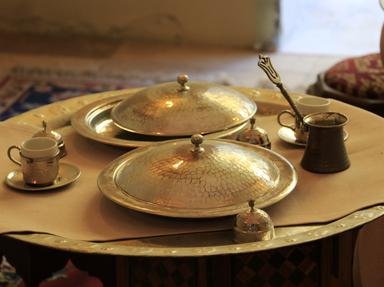Quiz Answer Key and Fun Facts
1. The origins of cotton candy go back to the spinning of what substance, the sole ingredient of the first machine-made cotton candy?
2. The cotton candy machine had two inventors. One, John Wharton, was perhaps unsurprisingly a confectioner. The other was a member of a profession that seems unlikely to promote the eating of sugar. What was William Morrison's day job?
3. Wharton and Morrison's machine worked by spinning a drum full of sugar that had been heated to around 186 degrees Celsius. What happens to sugar at this temperature?
4. The fairy floss machine, as it was known at the time, was introduced with great success at the 1904 World's Fair held to mark the 100th anniversary of what 1803 event?
5. Cotton candy goes by many different names around the world. Which of the following is the translation of its French name, barbe � papa?
6. The first cotton candy was white and unflavoured, with the popular pink introduced soon after. In the 1950s blue cotton candy was introduced. It was paired with a red fruit but so coloured to separate it from other red fruit flavours. With what fruit flavour was the blue candy paired, the blackcap variety of which is frequently used to flavour slushies and other confectionary?
7. Cotton candy has been released in a whole host of sweet flavours over the years. However, making savoury versions has been a challenge for even the best. Which three-Michelin starred chef of The Fat Duck fame said that he had "spent four years trying to make savoury candyfloss. I know a lot about candyfloss now, but even more about flogging a dead horse"?
8. It is said that the first bite of any dish is with the eye. This was tested with an experiment called "A study in white" in which diners were presented with four white shapes and asked to associate each shape with a taste. Which shape did the majority of participants believe would be the sweetest?
9. In 2018, the Indian state of Tamil Nadu banned the sale of cotton candy because of the discovery of Rhodamine-B in samples on sale in the city of Chennai. What eye-catching purpose is the normal use for this chemical?
10. Mechanical engineer Leon Bellan has experimented with a use for cotton candy machines that may have even greater value than in producing a sweet fairground treat. What are his machines trying to create?
Source: Author
Snowman
This quiz was reviewed by FunTrivia editor
Bruyere before going online.
Any errors found in FunTrivia content are routinely corrected through our feedback system.
